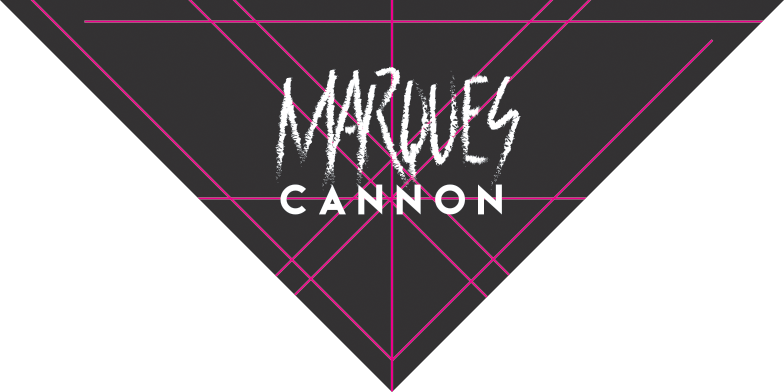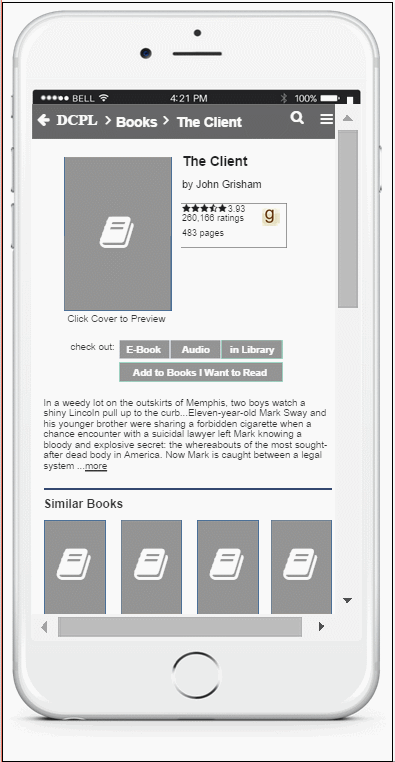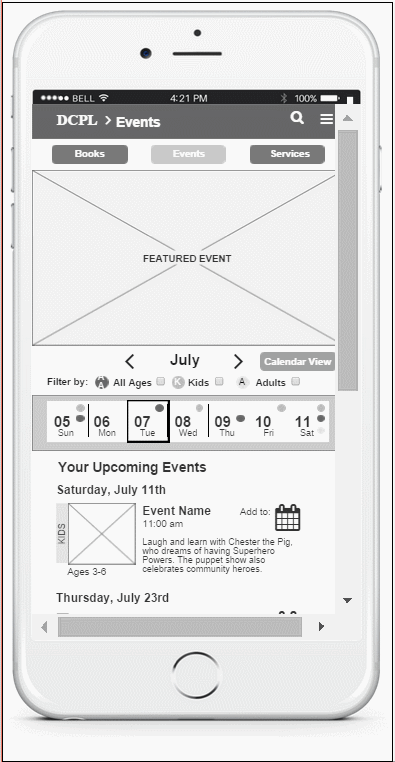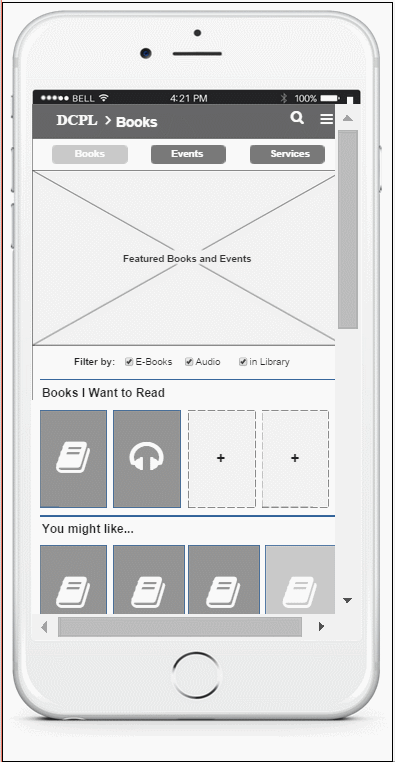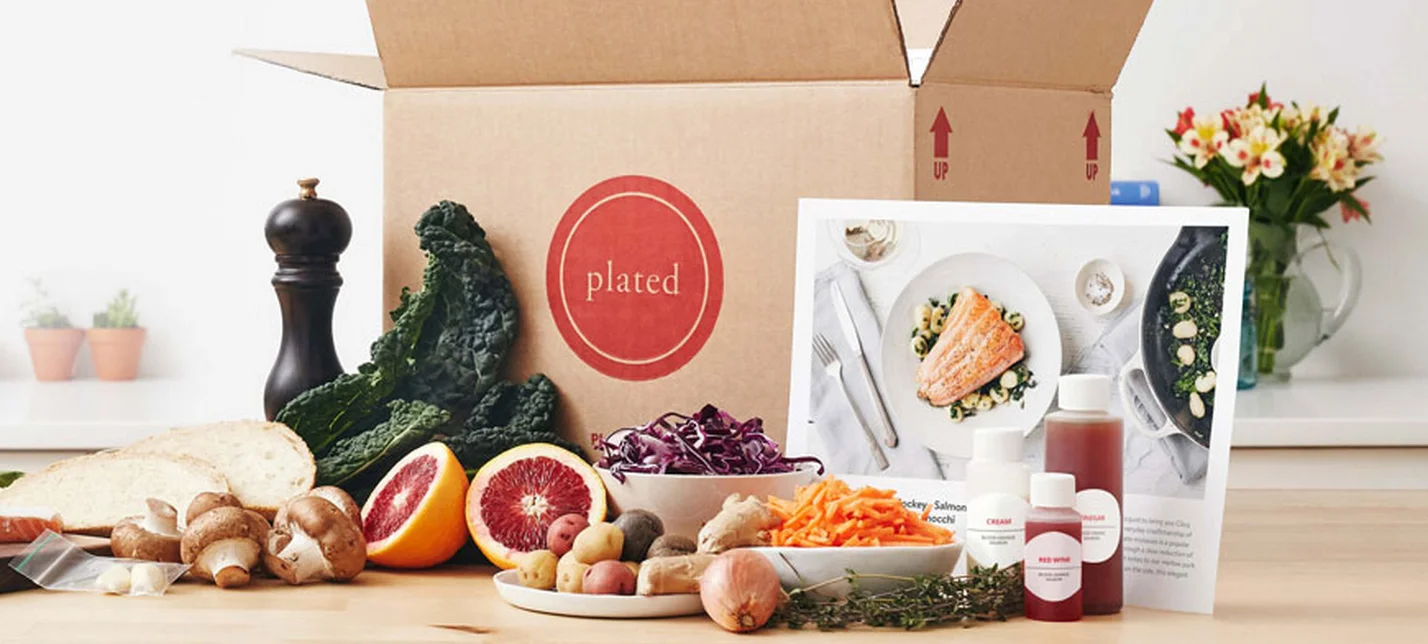DC PUBLIC LIBRARY
Redesign of the DC Public Library mobile app.
MY ROLE
Competitive Analysis, User Research, Information Architecture, Wireframes, Prototype, Usability Testing, Presentation, Spec Doc
The Client
DC Public Library is a network of 26 local libraries free and open to the public. Today, the system represents more than just a place to find books. The library’s services range from literacy classes to computer training, or meeting rooms or lab access.
GETTING STARTED
According to the brief we were given, the DC Public Library wants to encourage children and adults alike to read more by way of making better suggestions through their app. It also has a number of services ranging from literacy classes to computer training, or meeting rooms or lab access that it would like to surface to users. The new app needed to take a more personalized, fun approach that also allowed for reader discussion.
RESEARCH
At the beginning, my team needed to figure out the habits of library goers and, if possible, the habits of those who don’t frequent it. What kind of people use the library? What type of people don’t and why? By figuring this out, we could figure out how to personalize the app and focus it in the right directions.
While waiting for responses, we also conducted a competitive analysis. Combining the survey responses with this revealed a lot of gaps in the current app where a user would have to go to a different site every time they went through the journey of searching for, reading, and discussing a book. For example, people would create a wish list on Amazon, discuss the book over Twitter, and browse for new suggestions on Goodreads.com. This provided some great suggestions for pain points that could be addressed.
Along with the survey responses, we conducted user interviews for deeper insights in to library habits. Combining the answers, we noticed three different personas.



From there I was able to envision some user flows. Jesse for example would need to be able to find suggestions fast and need to know right away if a book she was interested in was available. Paul would want to be able to search for kid friendly events on the specific days he would be available. This gave us the basis where we could start our design studio.
IDEATION
Through the design studio, my team was able to come up with a number of different navigation options. We basically landed on a Netflix approach since the service is very successful at suggesting new material and the navigation is familiar to most. There would be a main hero image at the top with featured books, events, and services, followed by carousel lists broken up by categories such as “Kids” or “Drama”. I imagined these categories would be surfaced by an algorithm that took the user’s likes and dislikes in to account. The very first list would always be the “Wish List” which would be comprised of books that the user had manually placed there for easy and quick access.
One of the big areas of iteration was the “Events” section. We decided the app should be split up between “Books” and “Events” but the Event section originally included the library services as well. Interviews and card sorting proved this confusing so Services was given it’s own section.
PROTOTYPE
During wireframing and prototyping, I continued to iterate on the Event section. I originally started with a one week view of the calendar showing events, but early usability tests suggested people would want to see a full calendar but once a full calendar was implemented as the default, further tests proved it overwhelming. So the weekly view was re-implemented as the default with a button that would let the user toggle between a full calendar and the weekly view.





OUTCOME
- As the first group project, I learned a lot about how to work with a team on a UX project.
- Learned there are roughly three types of people that use the library: The persona who reads a lot and tends to check out physical books, the person who has little time to read and mostly uses an e-reader, and the person who uses the library mostly for it's services and events.
- Twitter is a surprisingly large source for book recommendations as well as discussion.
